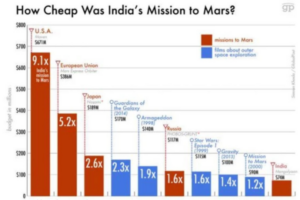“How do you know you’re going to get it right?”
This is the question I’m often asked before I perform a jazz concert.
At age 13, I played my first gig in a smoky Detroit jazz club. Since then, I’ve played 1000+ concerts worldwide, and most often, with a group of musicians I’ve never played with before. So, how do I know I’m going to get it right considering live jazz is complex, physically demanding, and mostly improvised?
The truth is I’ll never get it right. Never have, never will. Often misunderstood, creative confidence isn’t thinking a performance will be flawless. Instead, it’s the ability to recover quickly from setbacks.

When you think about your own creative confidence, the notion that you will be perfect or that every attempt will lead to a spectacular output is wildly unrealistic. Instead, confidence comes from the ability to bounce back when things inevitably don’t go as planned.
As the world of business evolves at breakneck speed, leaders like you are ‘playing jazz’ every day. You’re responding to change, rapidly testing new ideas, and co-creating in real time—no musical instruments required.
In this dynamic environment, creative confidence isn’t about expecting to be perfect. It’s about knowing how to recover quickly from setbacks, adapt, and thrive in the face of rapid change.
Correct the overcorrect.
When the misguided leaders at Enron, Tyco, and Worldcom committed fraud and caused huge shareholder losses, the Securities and Exchange Commission rightfully swooped in to prevent future cons. The problem is that the corrective measure, known as Sarbanes-Oxley, was a broad-based, sweeping regulation that may have been well-intentioned but ended up significantly hampering the competitiveness of U.S. businesses and contributed to the 2008 financial meltdown.
I’ve been guilty of similar overcorrections in my career. As I built ePrize — the largest interactive promotion agency in the world — I realized at one point that our quality had dropped significantly due to our loose systems. Instead of optimizing systems, I instinctively flung the pendulum too far by implementing draconian and rigid checklists. Quality increased, but speed and nimbleness took a nosedive, creating new problems in a business version of whack-a-mole.
Fight the urge to overreact when taking corrective measures. You’ll end up whittling down your challenges instead of magnifying the count.
Slingshot to Mars.
‘Jugaad’ is a colloquial Hindi word that refers to non-conventional, frugal innovation. It’s a mindset that can serve as a powerful advantage in the business world.
The Indian government has recently used ‘jugaad’ on a bolder scale, launching Mangalyaan–the first Asian spacecraft to orbit Mars. Scientists who launched the mission in just 15 months for the paltry budget of $75 million wore plastic shower caps instead of typical headgear, reused spacecraft modules, and carried out fewer but more efficient ground tests.
Their final ingenious move was inspired by the absence of powerful rocket technology necessary for a direct trajectory to Mars. Instead, the team opted for a longer, cheaper route and smaller rockets to reach higher altitudes. They used the last burn to break free of Earth’s gravity and slingshot to Mars.
To put Mangalyaan’s scrappy $74 million budget into context, NASA’s MAVEN Mars mission had an estimated cost of $671 million. Hollywood movies about space travel, such as Gravity, Interstellar, and The Martian, each had $100+ million budgets, far more than India’s actual flight to Mars.
In the spirit of ‘jugaad’, how will you use scarcity to inspire frugal and non-conventional innovation?

Put yourself in timeout.
It’s hard to pause in our furiously busy, full-throttle lives. Buried in our to-do lists, we rarely give ourselves a moment to explore new ideas. We tighten our grip on previous patterns, repeating our routines with stunning precision. And yet, the one thing we crave – ‘out of the box’ thinking – remains elusive.
This week, put yourself in timeout. Even a 15-minute reprieve from cranking out deliverables is an opportunity to explore new patterns, invent fresh ideas, and take your imagination out for a spin. If a timeout can reset a misbehaving child, surely it can offer a creative reset to unlock novel paths ahead.
Simply put, we can’t think outside the box if we’re choosing to stay trapped in one.
To your creative success…

PS: Want to share this issue of Find A Way? Just copy and paste the link or forward the email version. Did someone share this with you? Subscribe here to get your own copy delivered straight to your inbox every Monday.
About Josh
Josh Linkner is a New York Times bestselling author, serial entrepreneur, venture capital investor, professional jazz guitarist, and a globally recognized innovation expert. To learn more or to explore a collaboration, visit JoshLinkner.com
